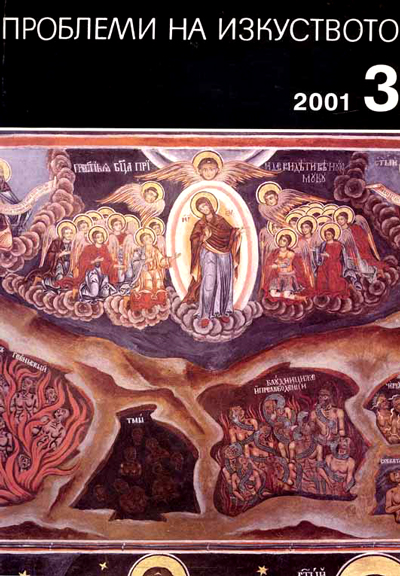Щрихи към декоративното наследство на художничката Анна Хен-Йосифова (1872-1931)
Strokes on the Decorative Heritage of the Paintress Anna Haehn-Jossifova (1872-1931)
Author(s): Julia Mineva-MilchevaSubject(s): History, Fine Arts / Performing Arts, Cultural history, Visual Arts
Published by: Институт за изследване на изкуствата, Българска академия на науките
Summary/Abstract: The artworks of Anna Jossifova (born Haehn), kept in the private collection of Prof DA E. Staycheva in Sofia - the richest known collection of this artist’ s creations - represent Anna Jossifova as one of the most original Bulgarian masters, working in the field of both painting and decorative arts during the first quarter of 20-th century. In the Bulgarian letters, this is the first specilised art-historical study, dedicated to the artist’s splendid life and works. Based mainly on the investigation of the applied art forms found in the collection, the study identifies their styles and techniques of execution; and outlines their key significance for the real artistic appearance of this period in the history of our culture, when the very concept of the decorative and style has been evaluated and fruitfully accomplished in practicing art as a way of life. Born German, in the old European cultural centre Braunschweig, Anna Haehn trained fine and applied arts in her native town, and in the Hague, Netherlands, with the leading still-life painter M. Rosenboom. In 1899 she married the Bulgarian eng. Petar Jossifov, and came to Sofia, where she stayed until her death in 1931. During the whole of her active creative life Anna Jossifova identifies herself as a Bulgarian artist, and regularly participates in the intensive activities of the painters’ associations “Savremenno izkoustvo” (“Modern art”) and “Lada”, keeping close relations and confessing similar artistic values with such painters as Haralambi Tachev, Nikola Mihaylov, Goshka Dazov. Her creative dignity has been also recognized and highly appreciated by prominent Bulgarian writers, art-critics and intellectuals, such as Konstantin Velichkov, Andrey Protich, Dobri Nemirov, etc. Through her oil paintings and watercolours, A. Jossifova introduces the genre of floral still life into the domestic fine art and elaborates it to individual achievements of universal European value. Being a relative and inheritor of Anna Josifova, Prof. DA Staycheva has managed to save in very good condition a great deal of watercolours, paintings, woodcut furniture, porcelains, textiles and other creations by the artist, in the past forming an integral Secessionist interior of the house of Jossifovi, itself built and furnished as a Gesamtkunstwerk. The very house, designed by the eminent Bulgarian architect Pencho Koychev in 1903 in the manner of Brussels’ modem, occurs to be the earliest ex ample of the Bulgarian Secession in architecture. (Unfortunately, although notified as a monument of culture, the original house has been illegally destroyed by the communist city authorities in 1987.) Besides of Josifova ‘s magnificent still life paintings of flowers, that adorn different collections in our country and abroad, and for which she is mostly known, she is also the first Bulgarian artist who worked out fine decorative wooden furniture in the technique of coloured pyrography, skilfully combined with carving, oils, veins martin, varnish, etc. She also decorated porcelain vessels with a rich palette of overglaze enamels; and refined objects of textile, employing experimental techniques of the age. In addition to a profound familiarity with most outstanding traditions of ornamental decoration, her various decorative works demonstrate a special affinity to old-Bulgarian and Byzantine ornamental motives. Their remarkable author’s transformation into unique art forms of a Secessionist mentality and sensibility suggests a phenomenon of great cultural value, revealed in the artistic personality of Anna Jossifova. Estimating the decorative work of the paintress, we should rank her among the most important artistic figures, creating the neo-Byzantine manner of the modem architecture and decorative arts, idiomatic of the image of Bulgarian Secession. In the context of the Bulgarian “modem” movement’ s search for a distinctive style, symbolising the revived continuity of the national cultural identity, as well as its re-integration in the old European “common home’’, revered elsewhere in the international mode of Art Nouveau, the artistic presence and significance of Anna Haehn Jossifova should be treated as central.
Journal: Проблеми на изкуството
- Issue Year: 2001
- Issue No: 3
- Page Range: 36-47
- Page Count: 12
- Language: Bulgarian
- Content File-PDF

